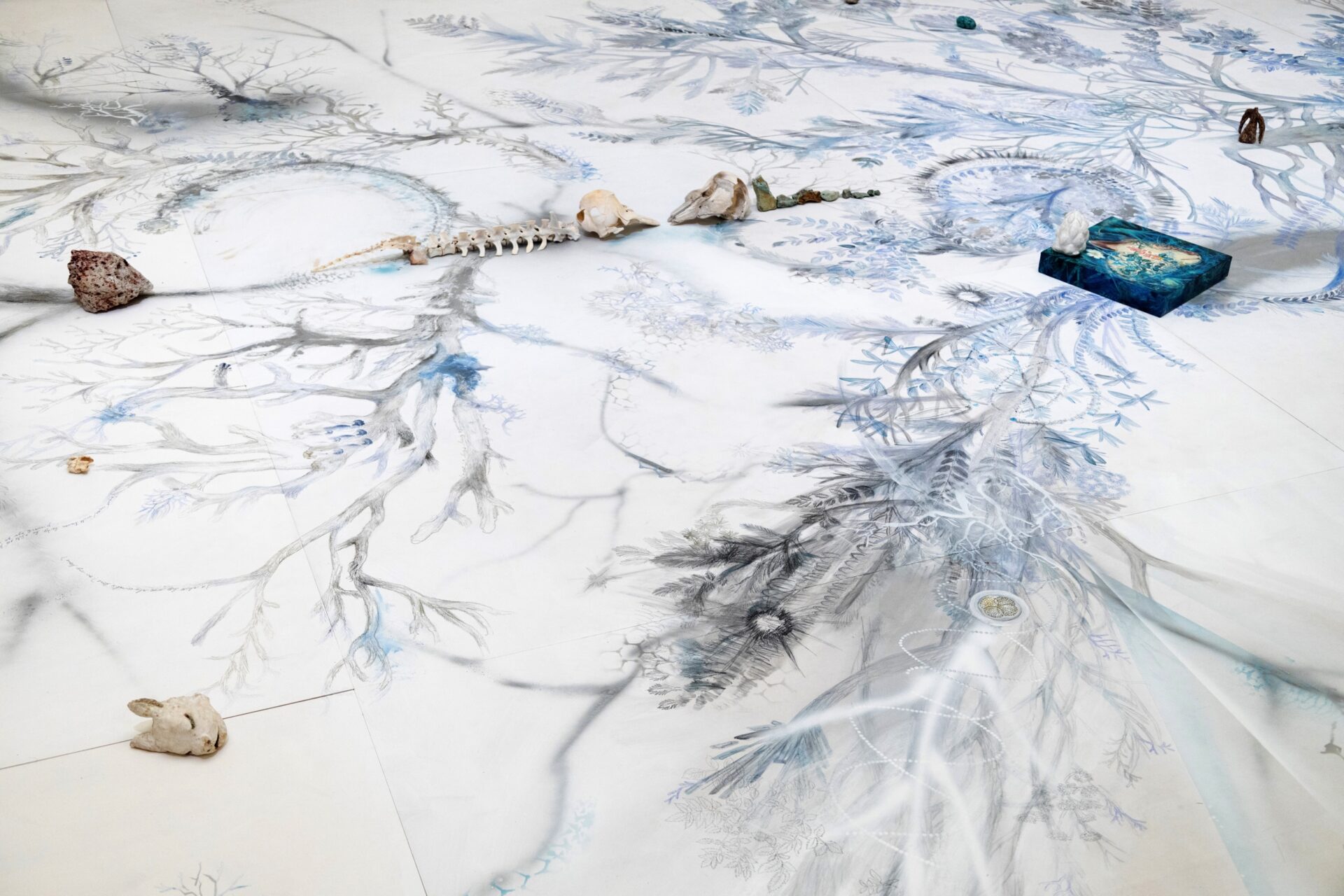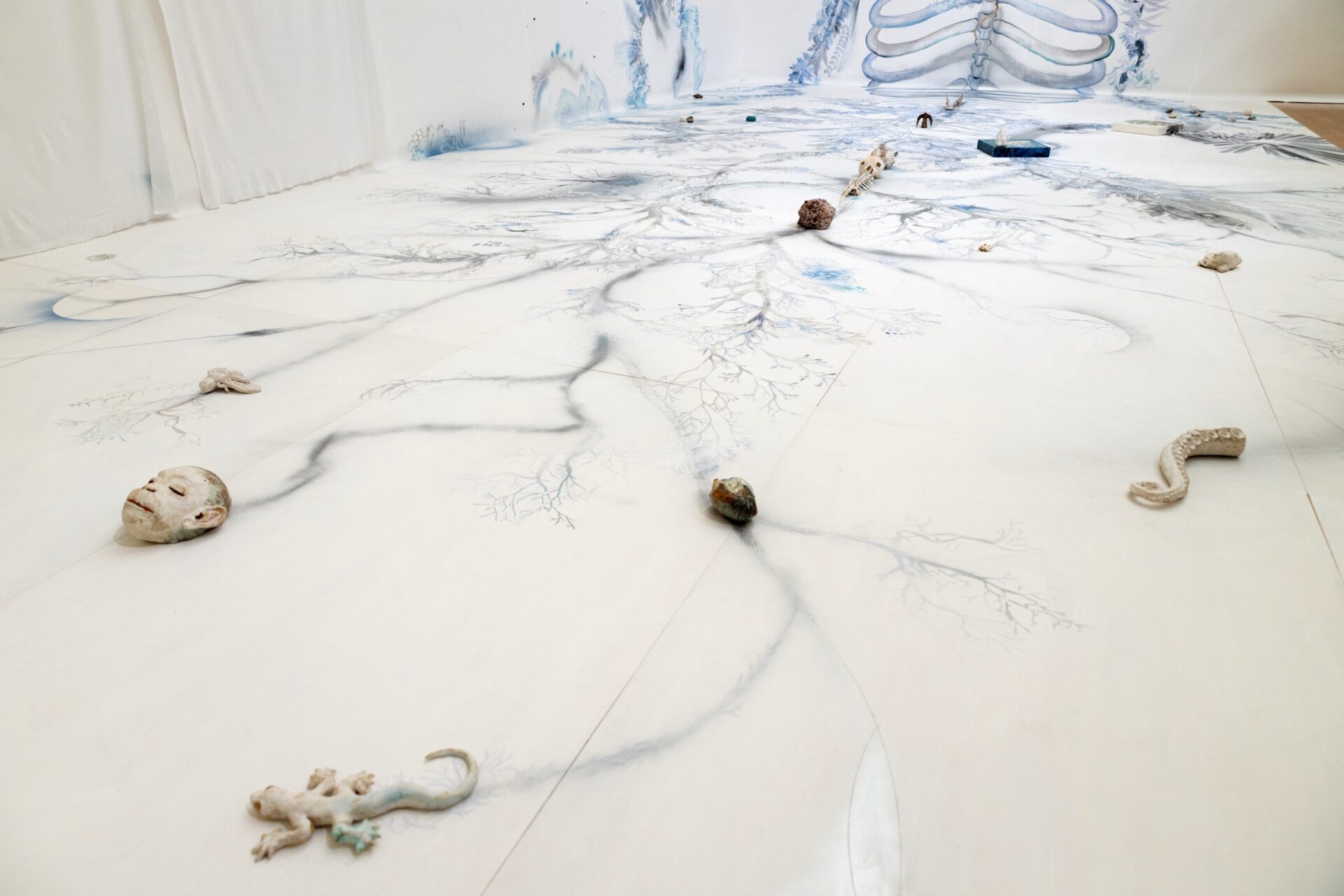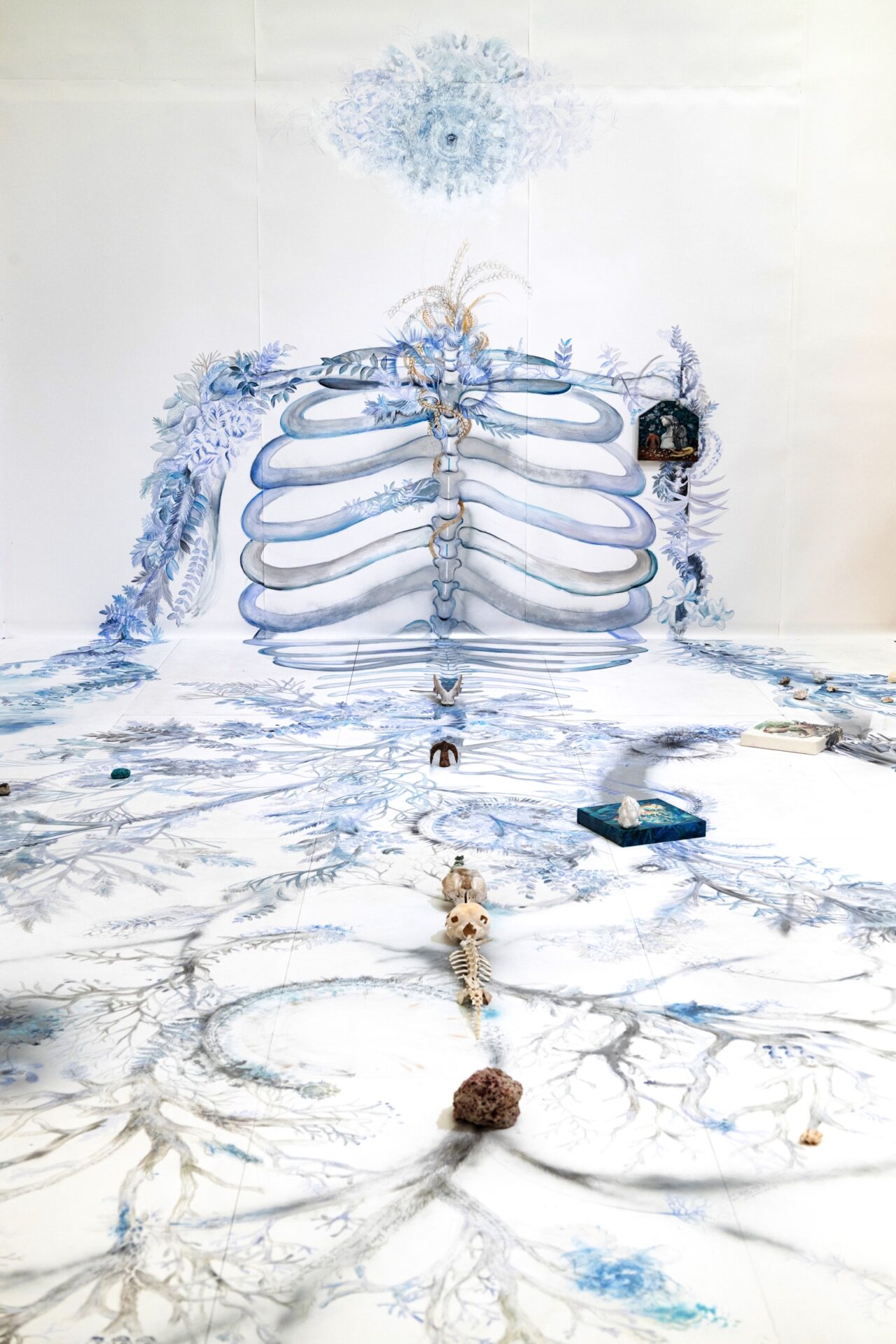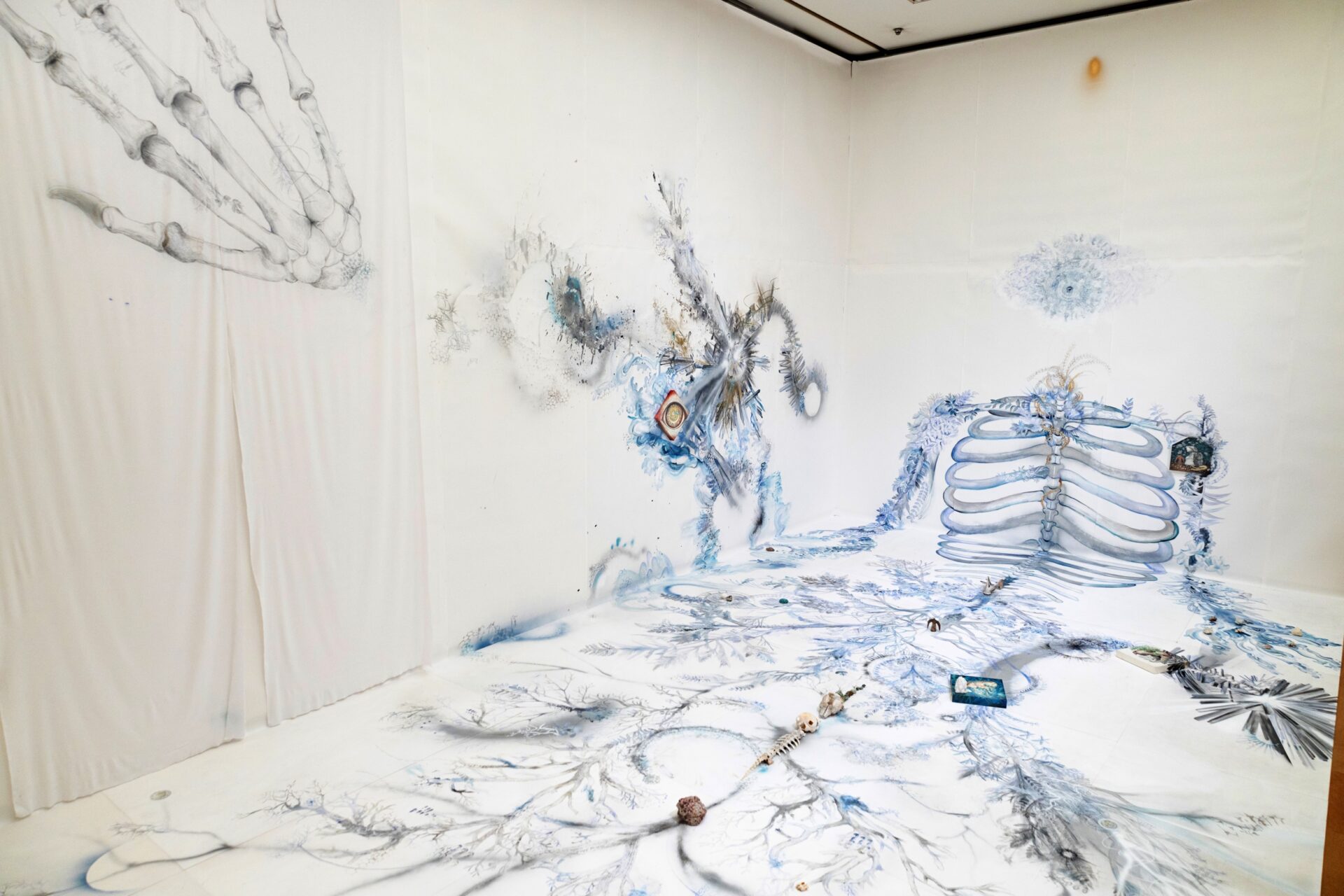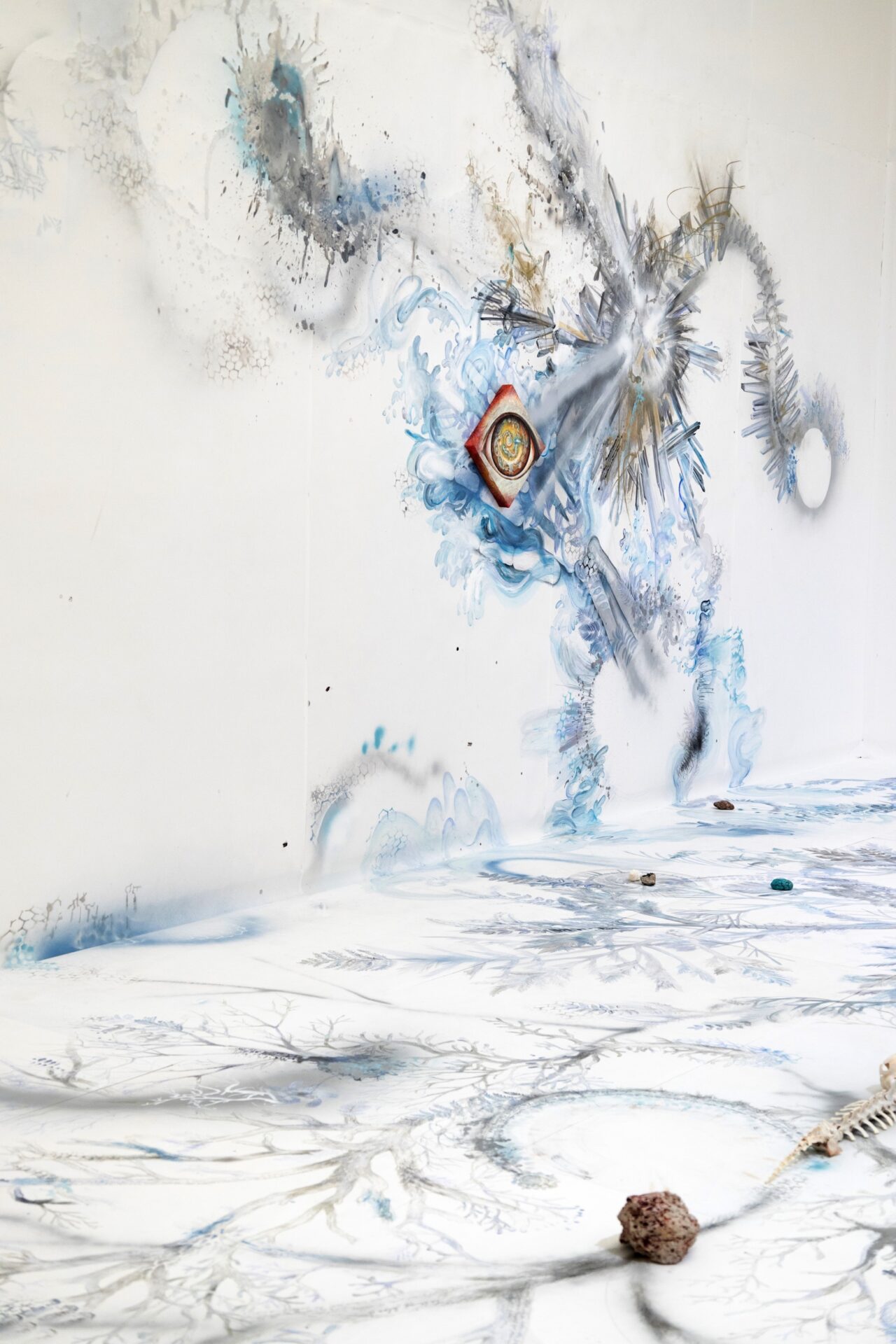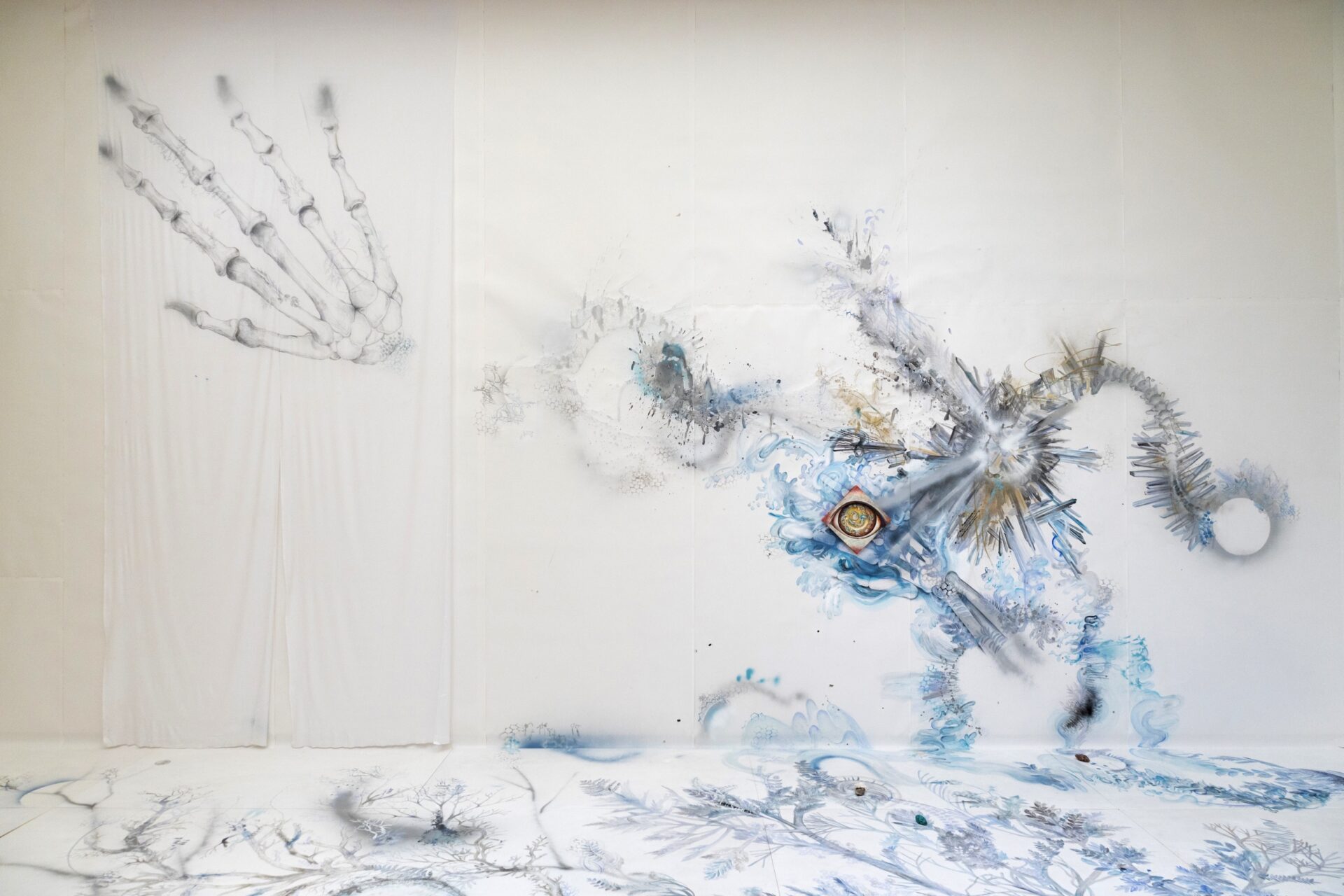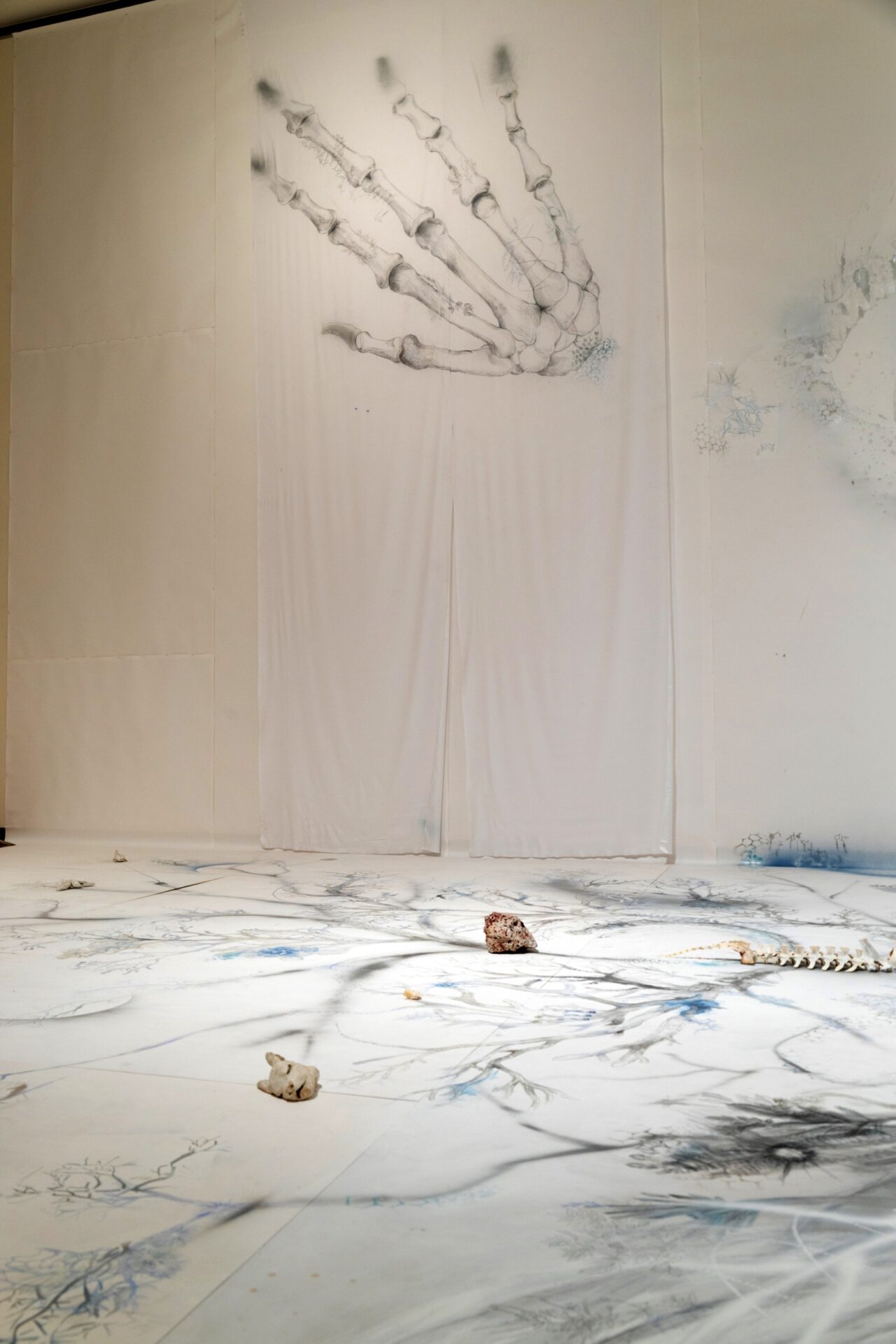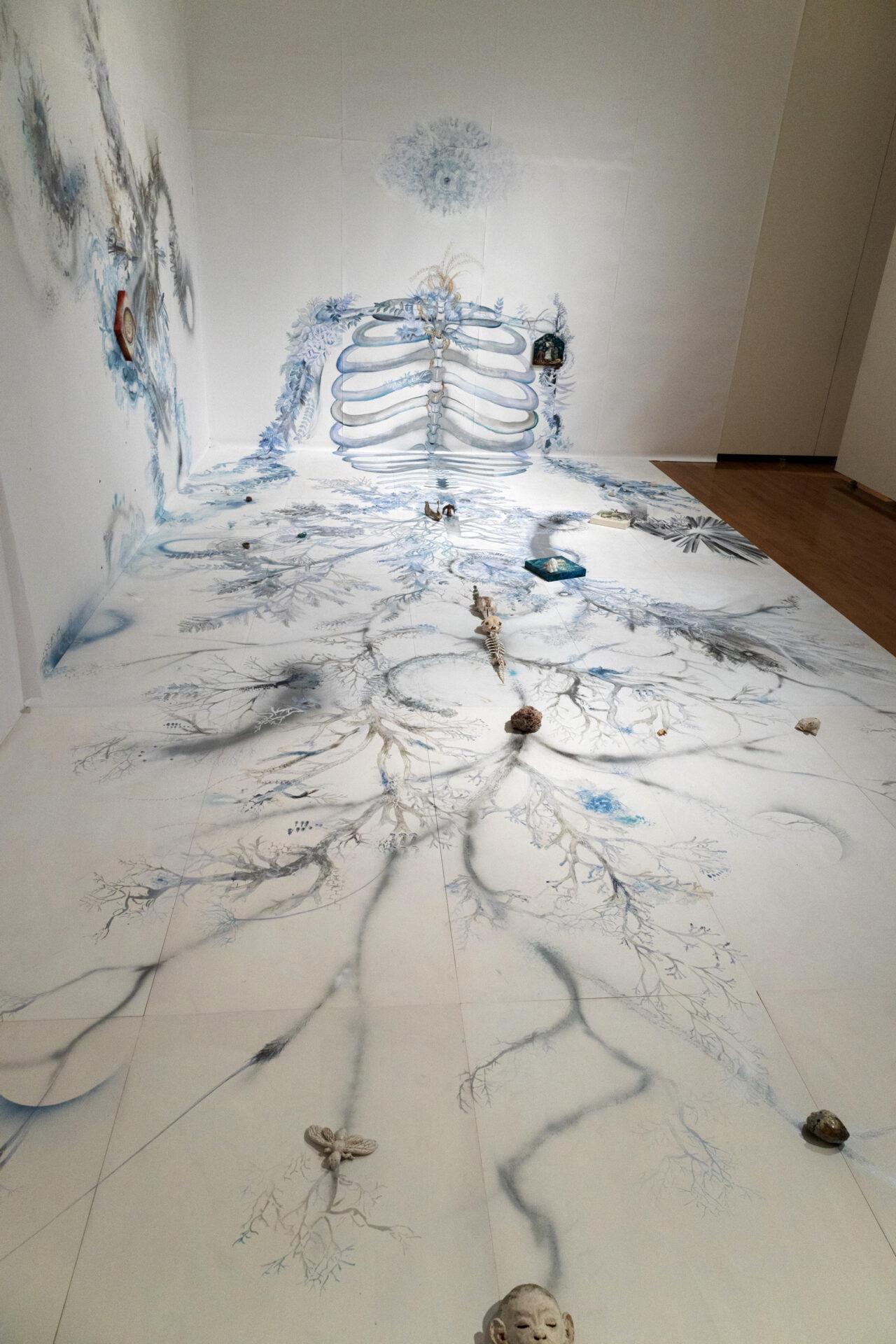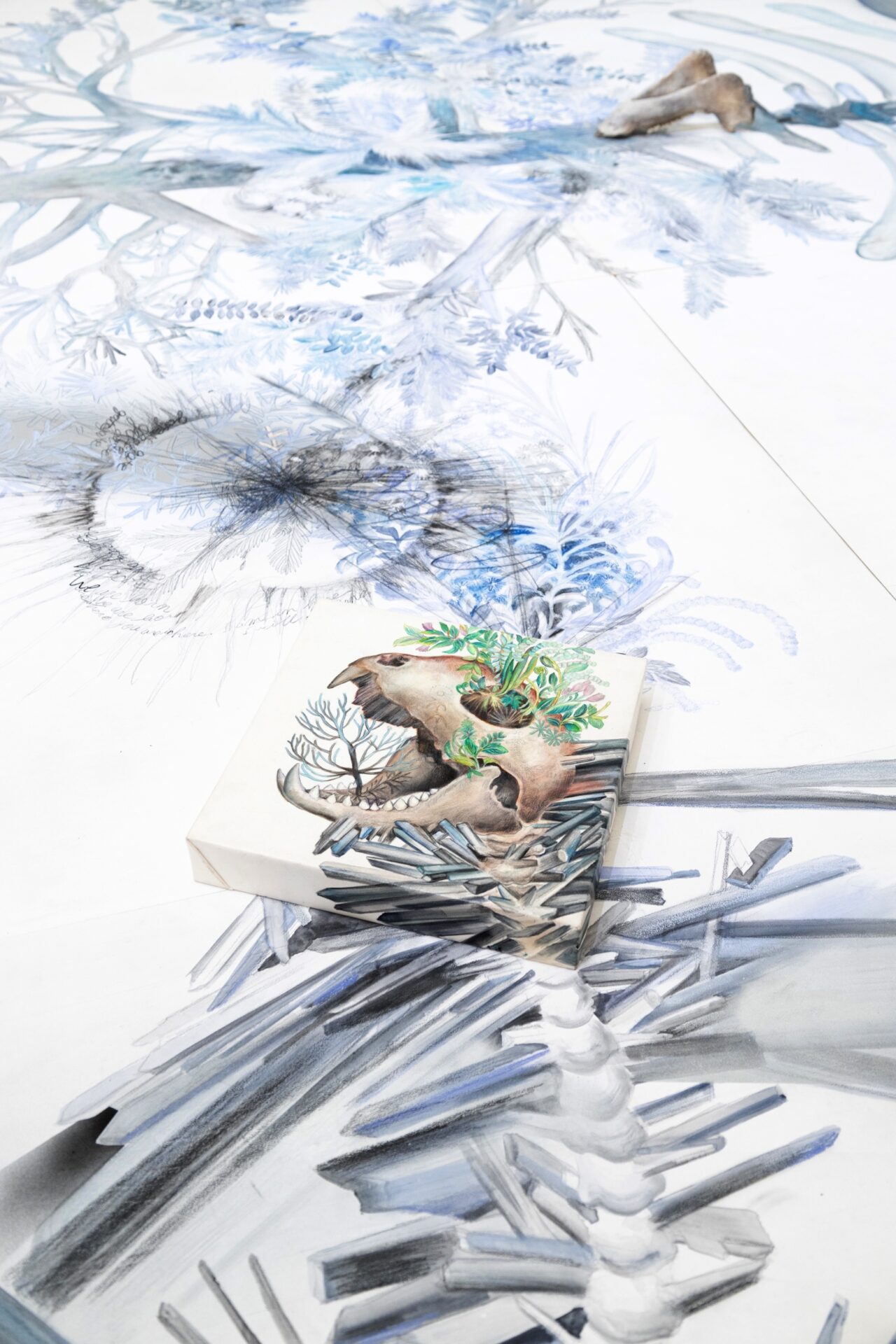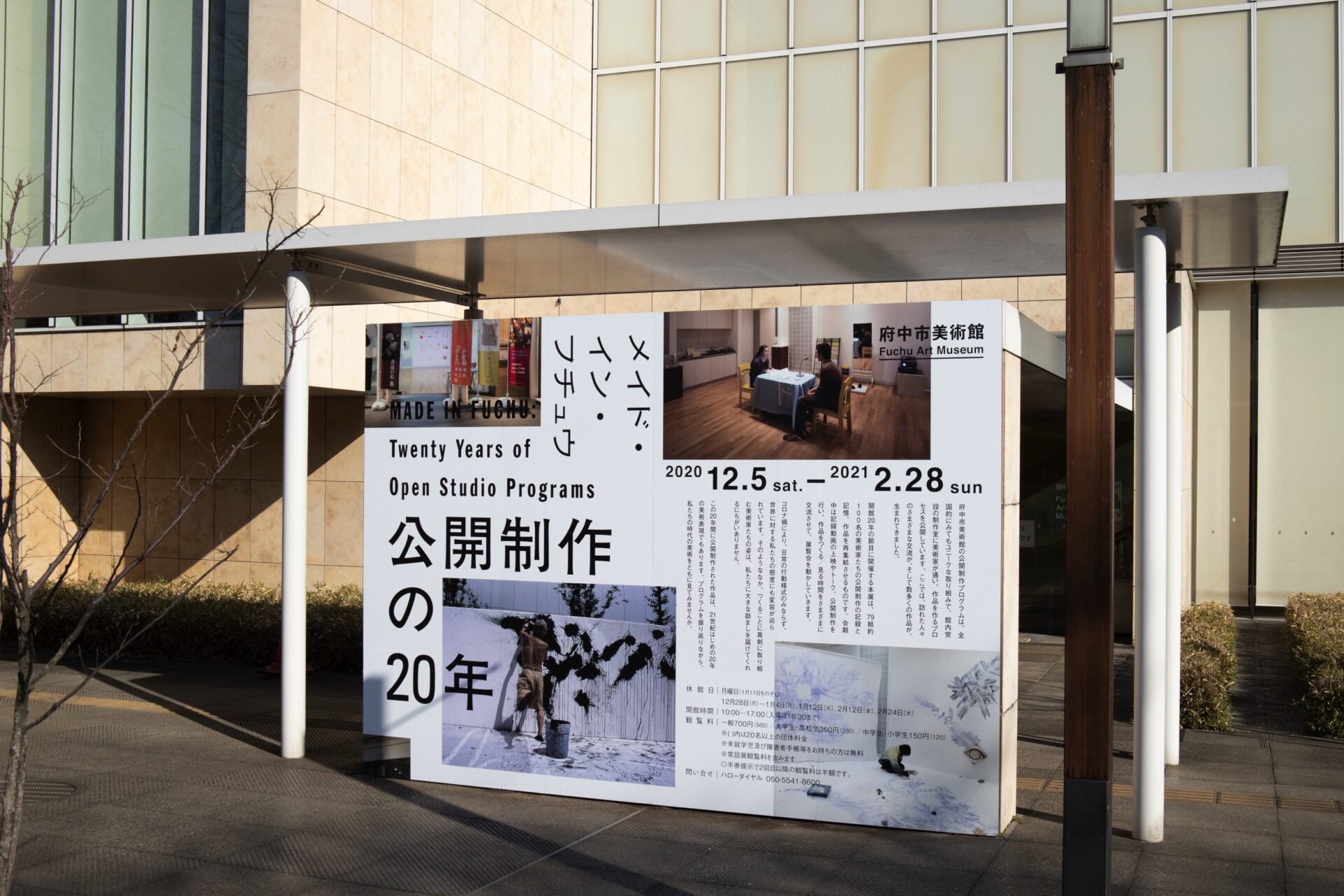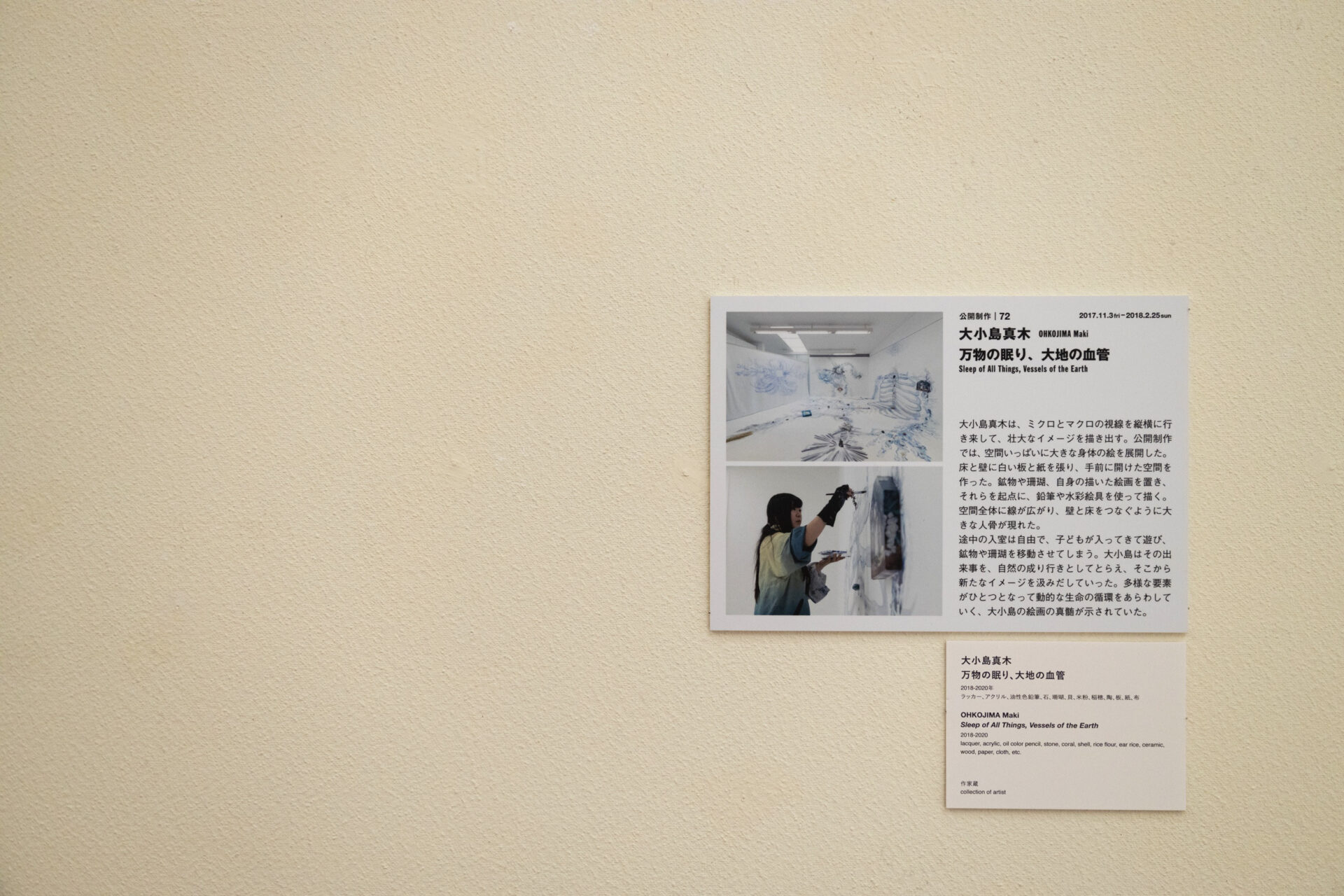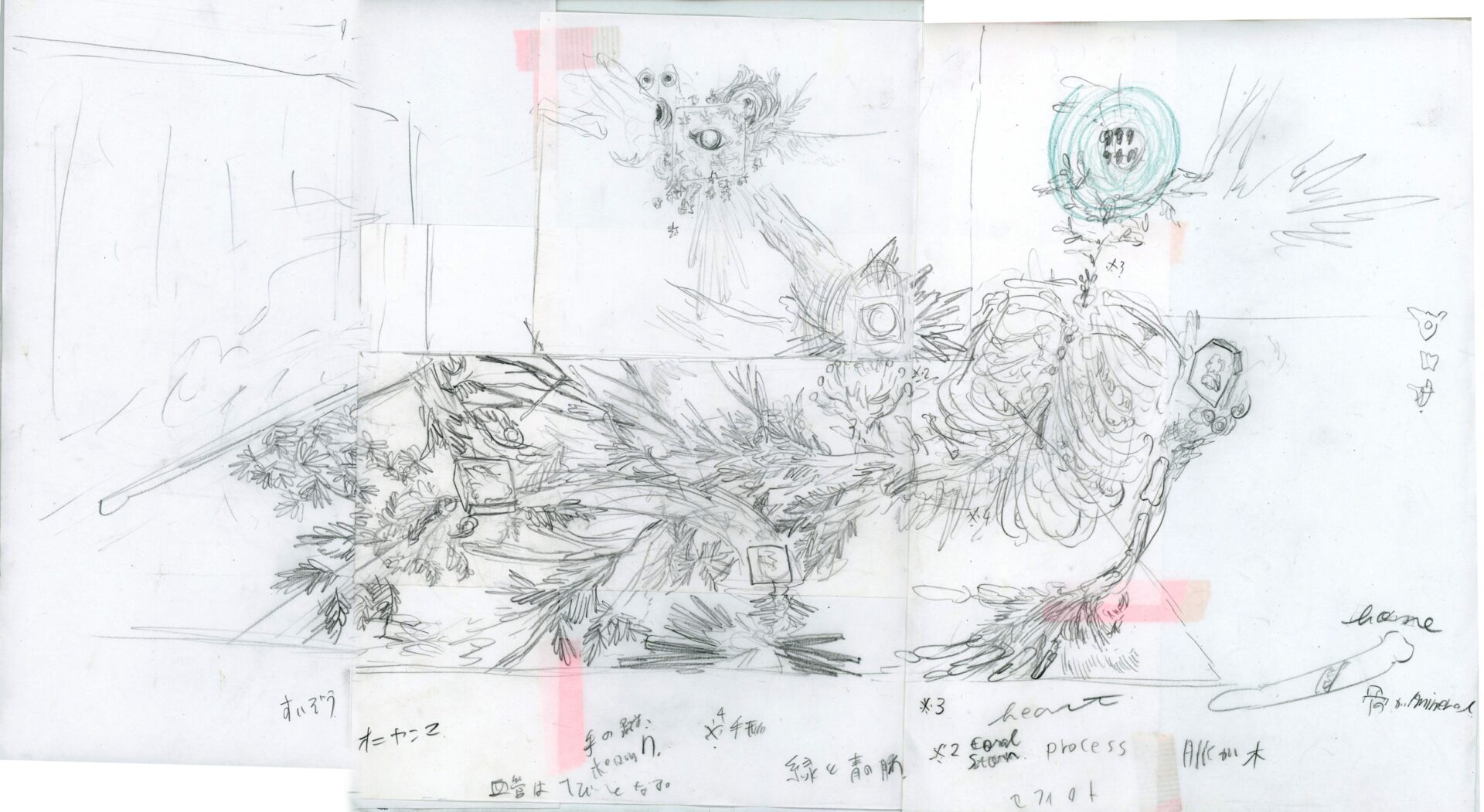Sleep of all things, Vessels of the earth
2018, 2020-2021,
Space piece size: 458 x 548 height 277 cm
Material: coral, shell, stone, wood, cloth, paper, acrylic, gesso, oil pencil, lacquer, rice flour, rice ear,
In Fuchu Art Museum
Exhibition View
All Photo by Kenji Chiga
Text : "big body"
Text : The "big body" as depicted
At the Fuchu City Art Museum, while showing the process of creation to visitors during the Open Studio, I used the floor, walls, and the entire space to draw a "big body".
Rice ears grow from the neck of the "big body," plants grow from various parts of the skeleton, the hands become water, and from the waist down, the body is connected to trees. The trees also change into minerals, and life sprouts there, creating a new ecosystem in the entire space.
One of the sources of this body image was a cave in Yamanashi Prefecture called the Funatsu Tainai Jugata.
The Funatsu Tainai Jugata is said to be a cave formed when magma covered a fallen tree and then the magma cooled and the tree decayed.
The inner cave is well represented by the epidermis of the burned tree, which looks like ribs or folds of internal organs.
In the Funatsu Tainai Jugata, a practice called "Tainai Meguri", in which one experiences reincarnation by walking through the cave as if it were a womb, has been practiced since the Edo period as part of the Fuji faith.
In the "big body" inspired by the Funatsu Womb Tree Model, volcanic stones, corals, and shells are placed.
The parts placed in various places were occasionally moved by the visitors. In response to the moving parts, my drawings also extended outward from my consciousness.
On one occasion, in a few moments, the children moved all the coral and shells that had been placed in the spine of the "big body" to the hands of the body. So I decided to draw the hands as "water hands".
Among the parts, there was also a painting on a square 30cm canvas, which was also in motion. The image grew from inside the frame outward, and the drawing spread more and more into the actual space. In a public exhibition, there is the tension of being watched by people and more time constraints than usual, but there is also the fun of having the lines extend beyond your own body, driven by such a raw sense of site.
In this exhibition, I also showed a video work that I shot from the oceanographic research vessel Tara, which includes a scene of a white whale carcass being eaten by various creatures. The body of the white whale, which is being eaten by other life forms and melting into the ocean, overlaps with our "small body" that is melting into the "big body" that fills the public exhibition room.
Maki Ohkojima
Video archive
">Other Works
←Archives© 2025 Maki Ohkojima
